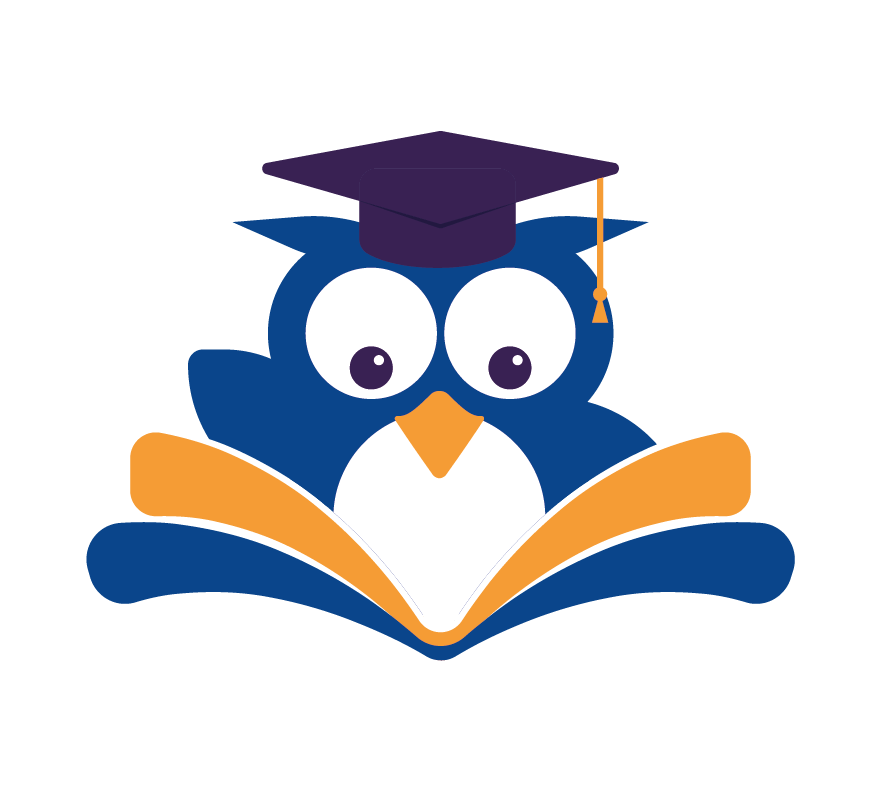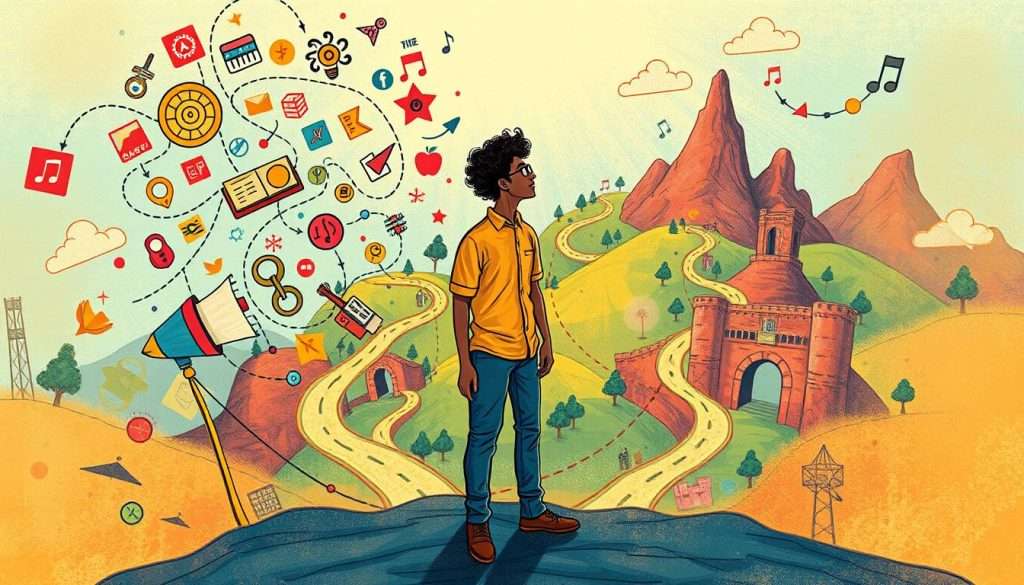Are you ready to unlock your full potential? Acquiring new abilities can change your life. It opens doors to new opportunities and boosts your personal and professional growth.
John Rampton once said, “If you are not willing to learn, no one can help you. If you are determined to learn, no one can stop you.” This mindset is key when developing new skills. By being open to learning, you can beat obstacles and reach your goals.
Key Takeaways
- Acquiring new skills can transform your life and enhance personal and professional growth.
- Having the right mindset is crucial for successful learning.
- Embracing a willingness to learn can help you overcome obstacles and achieve your goals.
- Developing new skills can open doors to new opportunities.
- Personal growth is closely linked to the acquisition of new abilities.
The Power of Continuous Learning
Learning new skills is like leveling up in life, opening doors to new opportunities. In today’s fast world, the ability to learn new abilities and enhance expertise is more valuable than ever.
Why Skill Development Matters in Today’s World
The modern workplace is fast-paced, with rapid tech changes and shifting industries. Being able to adapt and learn new skills is key to staying relevant.
The Competitive Advantage of Diverse Skills
Having diverse skills can give you a big edge. By learning new abilities, you open up more professional doors and become more valuable to employers.
Getting new skills can lead to new career paths and personal growth. As you enhance your expertise, you face new challenges and experiences. These can be both rewarding and profitable.
A recent source noted, “Getting really good at something new is like unlocking a hidden level in the game of life.” This shows the excitement and fulfillment of mastering new skills.
Assessing Your Current Skill Set
Knowing your current skills is key to growing new ones. To acquire new competencies, start by understanding your current abilities. This means listing your skills, seeing how they fit, and spotting where you can get better.
Conducting a Personal Skills Inventory
Doing a personal skills inventory is a chance to see your strengths and weaknesses. Begin by making a list of your skills. Include both technical skills (like coding or data analysis) and soft skills (such as talking well or working in teams). Use a table to keep your skills organized:
| Skill Category | Specific Skills | Proficiency Level |
|---|---|---|
| Technical Skills | Python, JavaScript | Advanced |
| Soft Skills | Leadership, Team Management | Intermediate |
Categorizing Your Existing Skills
Sorting your skills helps you see how wide and deep your abilities are. You can group them into technical, business, creative, or interpersonal skills. This way, you can see where you’re strong and where you need to improve.
There are many tools for self-assessment. Methods like the “Five Whys” can help you understand your motivations. Online quizzes, skill frameworks, or feedback from others can also give you a full picture of your skills.
By taking these steps, you’ll understand your current skills and where you need to acquire new competencies. This self-awareness is the first step to improving your skills.
Setting Effective Skill Development Goals
Starting to learn a new skill needs a clear plan. This plan should include SMART goals. SMART stands for Specific, Measurable, Achievable, Relevant, and Time-bound. With SMART goals, you have a clear path to follow.
Creating SMART Goals for Skill Acquisition
When setting SMART goals, be clear about what you aim to achieve. For example, instead of saying “I want to be better at writing,” say “I will write 500 words every day for 30 days.”
Breaking Down Complex Skills into Manageable Components
Big skills can feel too much. But, breaking them down helps. For coding, start with HTML, CSS, and JavaScript basics.
| Skill Component | Description | Timeline |
|---|---|---|
| HTML Basics | Understanding HTML structure and tags | 1 week |
| CSS Styling | Learning CSS selectors, properties, and values | 2 weeks |
| JavaScript Fundamentals | Understanding JavaScript variables, data types, and functions | 4 weeks |
Establishing Realistic Timelines
It’s important to set realistic timelines. Know how much time you can spend learning each day or week.
Example Timeline: For learning a new language, aim to spend 30 minutes daily, 3 times a week, for 6 months.
By following these steps and setting SMART goals, you’re on your way to improving your proficiency and mastering new talents.
How to Develop New Skills Effectively
Learning new skills is a journey. Knowing the science behind it can help a lot. We’re here to show you how to do it right.
The Science-Backed Learning Process
Learning a new skill takes you through different stages. It’s key to know these stages to learn well.
Understanding the Four Stages of Competence
The four stages are: unconscious incompetence, conscious incompetence, conscious competence, and unconscious competence. You go from not knowing you’re not skilled to being very good without thinking about it.
- Unconscious Incompetence: You don’t know you’re not skilled.
- Conscious Incompetence: You know you’re not skilled and start learning.
- Conscious Competence: You’ve learned the skill but need to think about it.
- Unconscious Competence: The skill comes naturally.
Leveraging Spaced Repetition and Retrieval Practice
Two great ways to learn are spaced repetition and retrieval practice. Spaced repetition means reviewing material at longer intervals to keep it in your memory. Retrieval practice is recalling information, which makes it easier to remember.
Using these methods can really help you learn new skills. For example, flashcards with spaced repetition can help you remember important terms.

By understanding the learning process and using spaced repetition and retrieval practice, you can learn better. Stay dedicated, and you’ll see how fast you can pick up new skills.
Creating Your Personalized Learning Plan
Creating a personalized learning plan is key to improving your skills. It acts as a guide, helping you learn new things and grow.
Structuring Your Skill Development Journey
A good learning plan keeps you on track and motivated. It’s important to break down your goals into smaller steps.
Daily, Weekly, and Monthly Learning Objectives
Having clear goals for each time period is vital. Here’s how to organize your learning:
| Timeframe | Objectives | Example Activities |
|---|---|---|
| Daily | Focus on a specific skill or task | Practice coding for 30 minutes, review vocabulary for 15 minutes |
| Weekly | Complete a module or project | Finish a course module, work on a project that integrates new skills |
| Monthly | Achieve a significant milestone | Complete a certification course, develop a personal project |
Balancing Theory and Practice
It’s important to mix theory and practice. Theory gives you the basics, while practice makes it real.
By mixing theory and practice, your learning will be effective. For example, after learning a new programming language, use it in a personal project or open-source contributions.
Leveraging Different Learning Modalities
In today’s digital age, learning new skills is more varied than ever. This variety lets you customize your learning to fit your needs and likes.
Online Courses and Digital Resources
The internet is full of online courses and digital tools to help you develop new skills and learn new abilities. You can find video tutorials on YouTube, comprehensive courses on Udemy, and language apps like Duolingo. The choices are endless.
Evaluating the Quality of Online Learning Platforms
Choosing the right online learning platforms is key. Look for ones that offer:
- High-quality video content
- Interactive elements like quizzes and discussions
- Regular updates and new content
- User reviews and ratings
Maximizing Free and Low-Cost Learning Options
You don’t need to spend a lot to learn something new. Many websites and apps offer free or low-cost learning. For example, YouTube has a huge library of educational videos. Websites like Coursera also offer free courses from top universities.

By using these different learning methods, you can make a learning plan that suits your budget and learning style.
Overcoming Obstacles in Skill Acquisition
The journey to gain new skills is not always easy. But, with the right mindset, you can face any challenge. You’ll hit roadblocks and feel stuck. It’s key to know these are part of learning.
Dealing with Plateaus and Frustration
Plateaus can be tough, making you feel like you’re not getting anywhere. But, they’re a normal part of learning. Your brain is always adapting and learning new things.
Recognizing Normal Learning Fluctuations
Learning isn’t always a straight line. It has ups and downs. Knowing this can keep you motivated. For example, learning a new language might feel like you’re getting it, then not.
Techniques to Reignite Motivation
So, how do you get back on track when faced with obstacles? Here are a few tips:
- Set small, achievable goals to build momentum.
- Change your learning environment to stay fresh.
- Seek feedback from others to gain new insights.
- Take breaks to avoid burnout and maintain a healthy learning pace.
Let’s look at a simple table to see how different strategies work:
| Learning Strategy | Effectiveness | Motivation Level |
|---|---|---|
| Setting small goals | High | Boosts motivation |
| Changing environment | Medium | Keeps learning fresh |
| Seeking feedback | High | Provides new insights |
By using these strategies and understanding learning’s ups and downs, you can keep moving forward. Remember, the journey to gain new skills is just as valuable as the skills themselves.
Measuring Your Progress
To get better, you need to know where you are. That’s why measuring progress is key. It keeps you motivated and focused on your goals.
Establishing Meaningful Benchmarks
Benchmarks are like milestones on your journey. They help you see how far you’ve come. By setting clear goals, you can adjust your learning plan as needed.
Creating Skill Proficiency Levels
Creating levels of skill means setting goals for each stage of your learning. You might start as a beginner, then move to intermediate, and finally become advanced. This way, you can improve proficiency by breaking down your goals into smaller steps.
Using Assessments to Gauge Improvement
Regular assessments are key to seeing how you’ve improved. You can use quizzes, practical exercises, or projects to test your skills. For example, if you’re learning a new language, you could take a quiz to check your grammar or have a conversation to test your speaking.
- Set regular assessment dates to track your progress.
- Use a variety of assessment tools to get a comprehensive view of your skills.
- Adjust your learning plan based on your assessment results.
By setting meaningful benchmarks and using assessments well, you can stay on track and keep improving your skills.
Applying Your New Skills in Real-World Contexts
As you move forward in your learning journey, it’s important to apply what you’ve learned. You’ve worked hard to develop new skills. Now, it’s time to use them in real-life situations.
Transitioning from Learning to Application
Switching from learning to using your skills can be tough. But it’s a key step in mastering new talents. To make this easier, look for chances to practice in safe settings.
Finding Low-Risk Opportunities to Practice
Start by finding safe ways to use your skills. This might mean doing small tasks at work or volunteering. For example, if you’ve learned a new programming language, try working on open-source projects or solving coding challenges.
The gap between what you know and how you apply it is called the application gap. To close this gap, look for chances to use your skills. Here are some tips:
- Start small: Begin with minor projects or tasks that allow you to apply your new skills without significant risk.
- Seek feedback: Reach out to peers or mentors who can provide constructive feedback on your application of new skills.
- Reflect and adjust: Regularly reflect on your experiences and adjust your approach as needed.
For example, if you’ve learned a new marketing tool, start with a small campaign. As you get more confident, you can tackle bigger projects.
| Skill | Low-Risk Application | High-Risk Application |
|---|---|---|
| Programming | Contributing to open-source projects | Developing a critical system for a large company |
| Marketing | Running a small social media campaign | Leading a multi-million dollar marketing campaign |
By doing more complex tasks, you’ll get better at using your skills. The important thing is to keep trying and stay committed. As you keep using your skills, you’ll learn more and understand how to use them better.
Maintaining and Expanding Your Skill Set
As you keep learning, it’s key to keep and grow your skills. This helps you stay ahead in today’s fast world. It’s not just about learning new things; it’s about keeping them sharp and useful over time.
Preventing Skill Atrophy Through Consistent Practice
Practicing regularly is key to keeping your skills sharp. Skills can fade if not used often. To avoid this, use your new skills every day in your life or work.
Scheduling Regular Skill Maintenance Sessions
Make a plan to keep your skills up by setting aside time each week. For example, if you’ve learned a new language, spend 30 minutes a day practicing it.
Integrating Skills into Daily Activities
Try to use your new skills in your daily life. If you’ve improved your writing, write every day. This keeps your skill sharp and helps it grow.
| Skill | Maintenance Activity | Frequency |
|---|---|---|
| Language Learning | Conversing/Listening | Daily (30 minutes) |
| Writing | Journaling/Short Stories | 3 times a week (1 hour) |
| Coding | Coding Challenges | 2 times a week (2 hours) |
By using these methods, you can improve your skills and keep them sharp. The goal is to make keeping your skills up a regular part of your life.
Conclusion: Your Journey to Continuous Growth
As we wrap up our exploration of developing new skills, we’re reminded that this journey is ongoing. You’ve taken the first steps by assessing your current skill set, setting effective goals, and creating a personalized learning plan. Now, it’s time to keep moving forward.
Developing new skills is a lifelong process that requires dedication and persistence. By leveraging different learning modalities and overcoming obstacles, you’re well on your way to achieving your goals. Remember, the key to success lies in maintaining and expanding your skill set through consistent practice.
As you continue on this journey, we encourage you to stay motivated and inspired. Keep pushing yourself to new heights, and don’t be afraid to try new things. By doing so, you’ll not only develop new skills but also unlock your full potential.
So, what’s next? We challenge you to keep learning, growing, and pushing beyond your comfort zone. Develop new skills, explore new interests, and watch yourself transform. The journey to continuous growth is yours to own.

